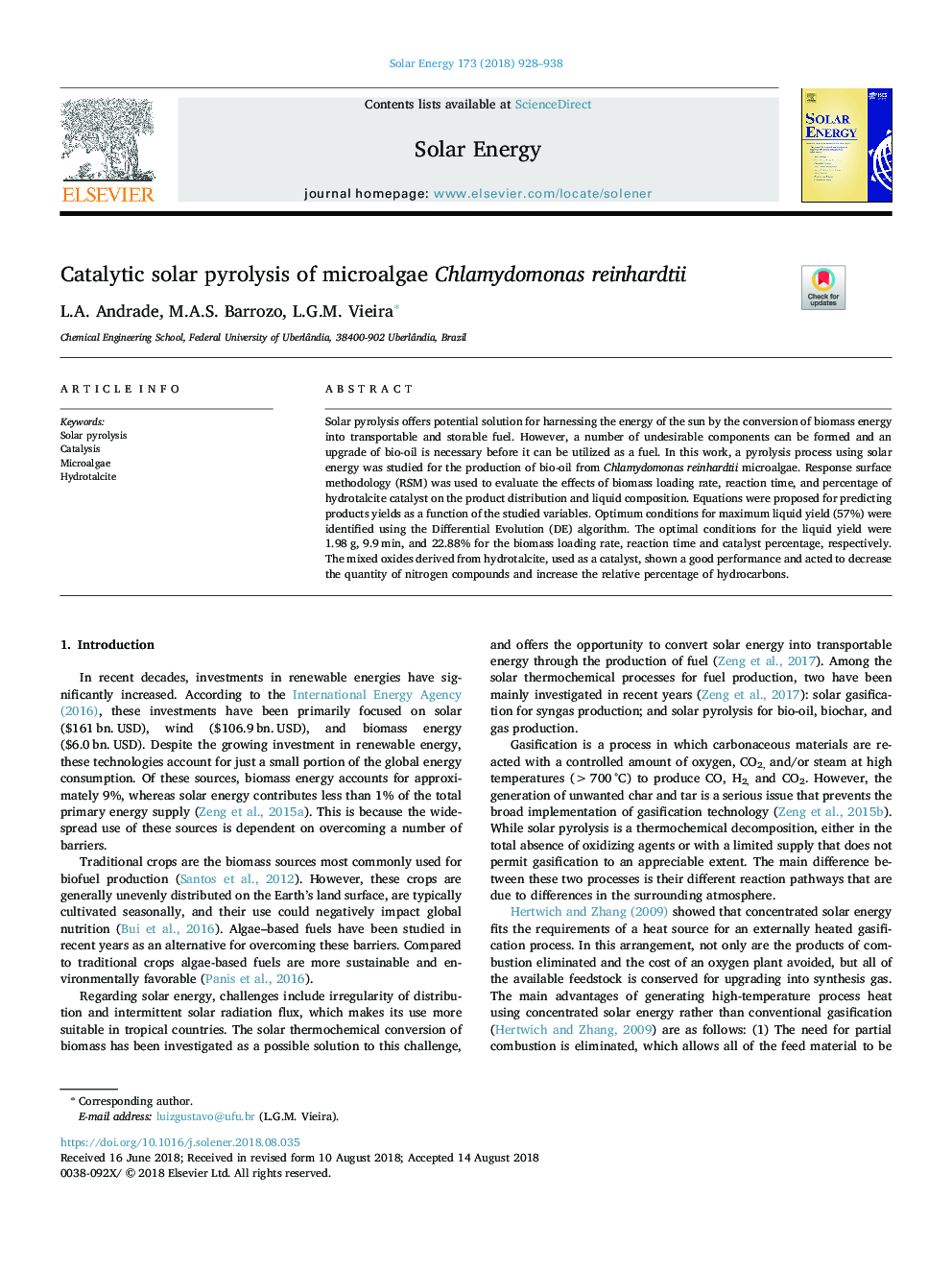| Article ID | Journal | Published Year | Pages | File Type |
|---|---|---|---|---|
| 11006929 | Solar Energy | 2018 | 11 Pages |
Abstract
Solar pyrolysis offers potential solution for harnessing the energy of the sun by the conversion of biomass energy into transportable and storable fuel. However, a number of undesirable components can be formed and an upgrade of bio-oil is necessary before it can be utilized as a fuel. In this work, a pyrolysis process using solar energy was studied for the production of bio-oil from Chlamydomonas reinhardtii microalgae. Response surface methodology (RSM) was used to evaluate the effects of biomass loading rate, reaction time, and percentage of hydrotalcite catalyst on the product distribution and liquid composition. Equations were proposed for predicting products yields as a function of the studied variables. Optimum conditions for maximum liquid yield (57%) were identified using the Differential Evolution (DE) algorithm. The optimal conditions for the liquid yield were 1.98â¯g, 9.9â¯min, and 22.88% for the biomass loading rate, reaction time and catalyst percentage, respectively. The mixed oxides derived from hydrotalcite, used as a catalyst, shown a good performance and acted to decrease the quantity of nitrogen compounds and increase the relative percentage of hydrocarbons.
Related Topics
Physical Sciences and Engineering
Energy
Renewable Energy, Sustainability and the Environment
Authors
L.A. Andrade, M.A.S. Barrozo, L.G.M. Vieira,
